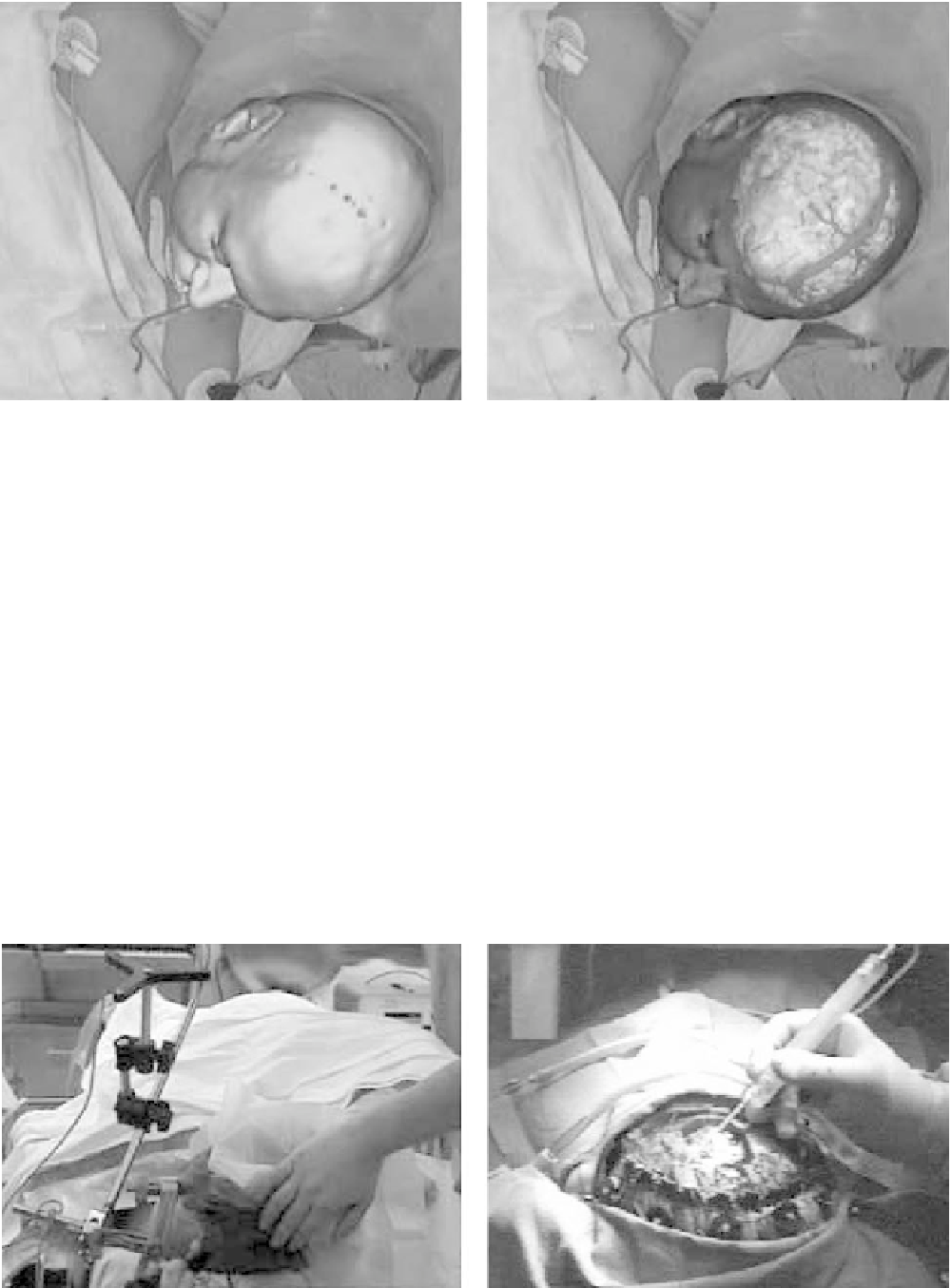Biomedical Engineering Reference
In-Depth Information
Figure 6.5-5 (Left) Initial registration, showing overlay of MRI skin data onto registered video image. (Right) Enhanced reality
visualization of the patient showing hidden internal structures overlaid on the surgeon's view of the patient.
because of its accuracy and ease-of-use benefits, though
magnetic tracking systems are of similar capability.
Tracking patient head motion is often necessary for
a variety of reasons. The head is not always clamped to
the operating table, the head may move relative to the
clamp, the operating table may be moved, or the hard-
ware performing the tracking may be moved to rearrange
lights or other equipment in the operating room. Al-
though not all image-guided surgery systems account for
patient motion,
[1, 2, 6, 21, 29]
solve this problem by
attaching trackable markers to the head or clamp. We
currently utilize an optically trackable configuration of
markers attached to a Mayfield clamp (
Fig. 6.5-6
). We
have also experimented with directly attaching trackable
LEDs to the skin surface of the patient. Our experience
is that while in most cases this worked well, it required
that the surgeon carefully plan the location of the LEDs
to ensure that they did not move between initial place-
ment and opening of the skin flap.
We require direct line-of-sight from the Flashpoint
cameras to the LEDs at times when the surgeon requires
image guidance. In order to maintain such line-of-sight,
we can relocate the scanning bar such that it is out of the
way of the surgeon but maintains visibility of the LEDs.
Such dynamic reconfiguration of the scanning bar is
a benefit of the head tracking process.
Instrument tracking is performed by attaching two
LEDs to a sterile pointer. The two LEDs allow us to track
the 3D position of the tip of the pointer as well as its
orientation, up to the twist angle, which is not needed for
this application.
Figure 6.5-6
shows the surgeon using the
trackable pointer in the opened craniotomy.
Figure 6.5-6 Trackable configuration of LEDs attached to head clamp, or to the skin flap.





